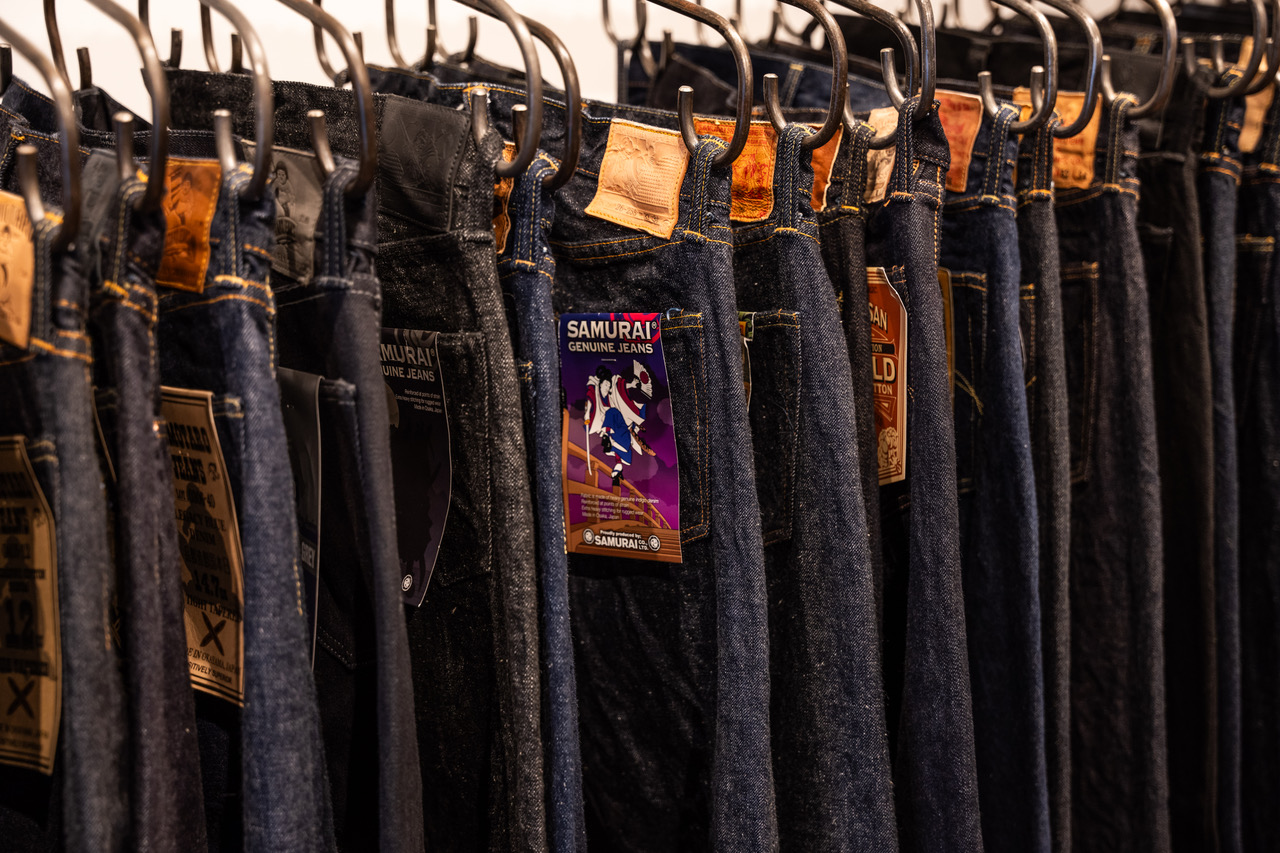
So what exactly is selvedge denim? An honest question, one that we get asked a lot in store. Often, we get so carried away with the intricacies and idiosyncrasies of our favourite mills and makers that we forget to address the basics. Consider this our attempt to remedy that with our very own Rivet & Hide beginner’s guide to selvedge denim.
While this isn’t an exhaustive guide by any means, it should serve as a handy primer for the curious and confused alike. So read on for our easy-reading guide to the science of Japanese selvedge denim.
What is Denim?
Let’s start with the word “denim”. In its purest and most basic form, denim is a hardy and hard-wearing cotton twill fabric. It’s made up of criss-crossing warp and weft threads, with the indigo-dyed weft typically passing under two natural warp threads. This twill weave structure is important; it produces denim’s instantly recognisable, cross-hatched texture and reassuringly robust hand. It’s also one of the main factors in denim’s unique fading potential.
What is Selvedge Denim?
The term “selvedge” is a portmanteau of “self” and “edge”. ”Selvedge” refers to the narrow, white, self-finished band on either edge of a run of denim fabric. Once woven, this self-edge, or selvedge, prevents the denim fabric from unravelling. These finished edges meet at the outseam of a pair of selvedge jeans. Denim enthusiasts, with a penchant for cuffing their jeans, typically display the outseam.
Originally, makers left selvedge white. But years of denim production saw the addition of coloured yarns - traditionally red - to the selvedge line. These coloured yarns aided with identifying higher quality denim.
Over the years, this ‘selvedge ID’ has become a marker of quality. Additionally, selvedge has also evolved into an identifier of particular brands and denim mills. A mark of pride in both production and provenance.
Contemporary denim brands like Samurai, Momotaro and 3sixteen have chosen to flex their fabric credentials. These brands achieve this through subtle (and not so subtle) selvedge ID modifications. Modifications include silver lamé threads, double red lines, and peach pink accents respectively.
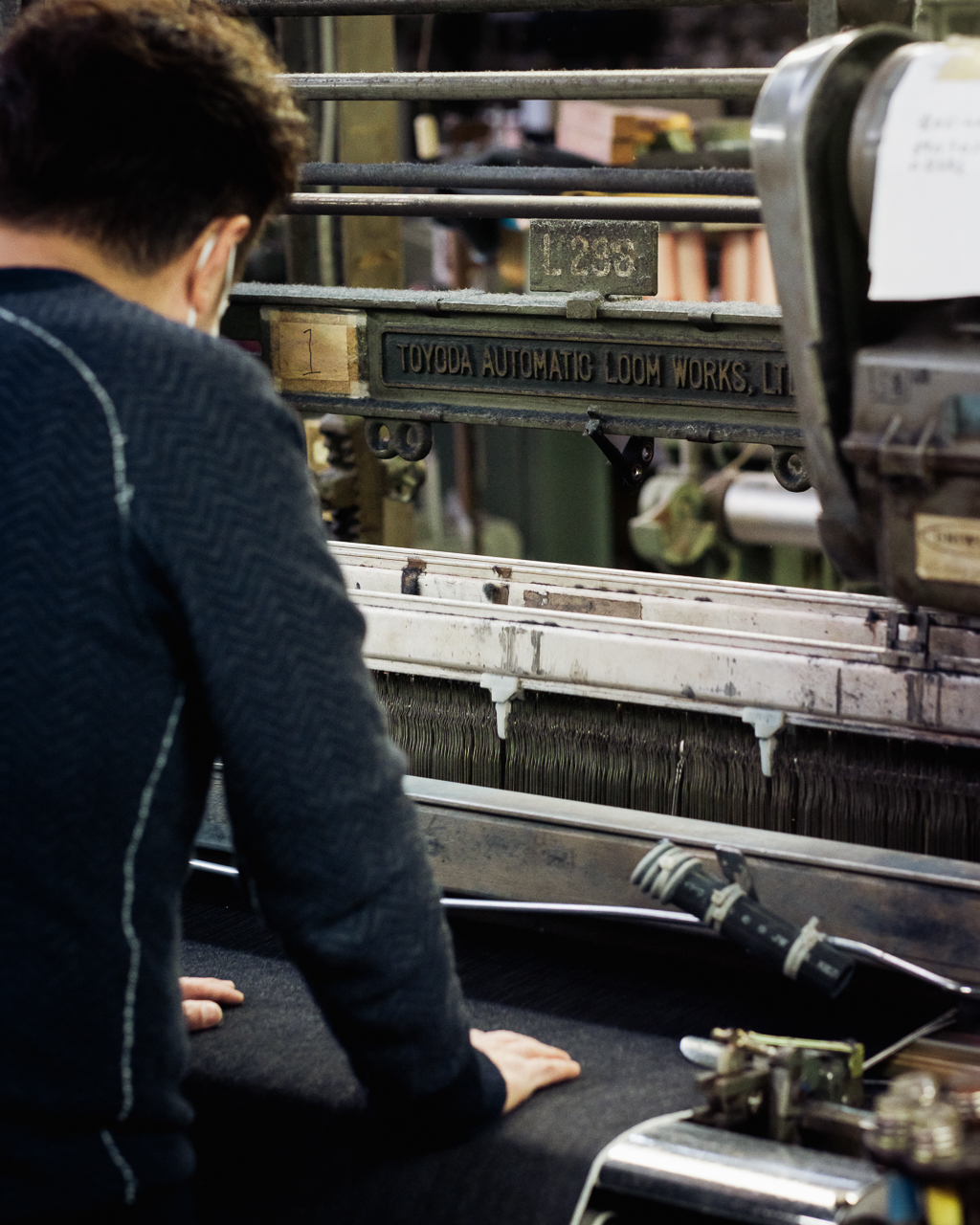

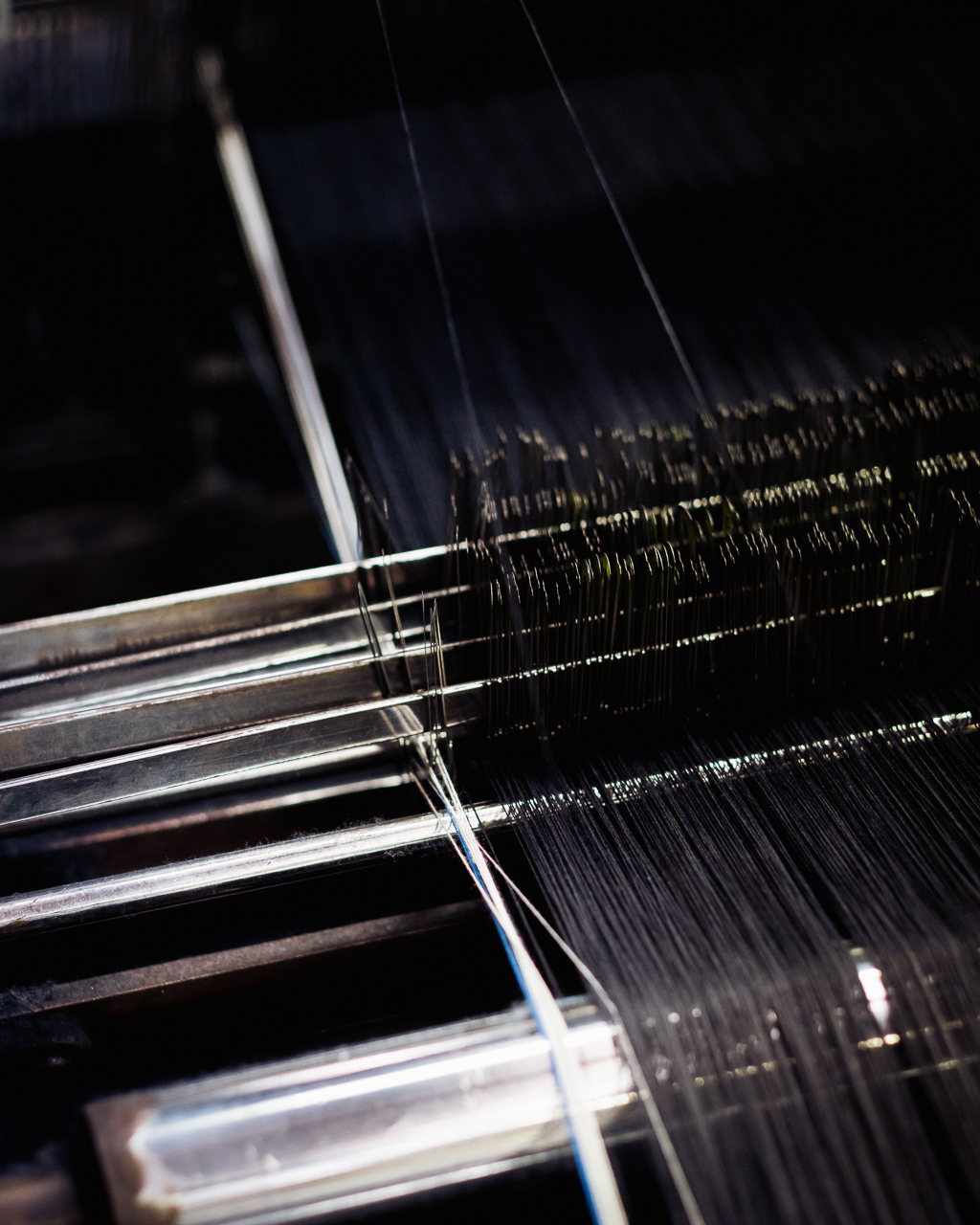

How is Selvedge Denim Made?
Selvedge denim is woven in small quantities using traditional shuttle looms. The shuttle loom process is relatively simple. The wooden shuttle loads the weft yarn and fires it horizontally back and forth across the warp. This process weaves the denim and creates a self-sealed edge along the length of the fabric. This is where selvedge denim gets its name.
Old-school and downright artisanal by today’s standards, authentic vintage shuttle looms are in very short supply. Those still in operation produce extremely small amounts of narrow fabric. Original G3 Toyoda looms weave many of our Pure Blue Japan and Studio D’Artisan selvedge denim jeans. G3 Toyoda's were among the very first looms used in Japan.
What is Raw Denim?
Raw denim refers to denim that is unwashed and untreated after the dying process. Regular denim is often subject to washing and distressing in order to give it an already worn-in look. However, raw denim lets you do the legwork yourself. Think of raw denim as a blank canvas - free to fade and evolve in its own unique way over time. No two pairs of raw denim will ever look the same.
Unlike most mass-market jeans, our selection of raw denim is typically rope dyed. Much like the shuttle loom process, rope dyeing is a slow, laborious method of adding indigo hues to your jeans.
Before quickly dipping into baths of indigo dye, makers twist the yarn into ropes. Once dry, makers dip the yarn again, and again, and again. The brief but repeated contact between yarn and dye accumulates the indigo on the surface of the fabric. This process leaves the white core intact. With wear, this surface colour fades away to reveal the pure white centre. In turn, this produces the beautiful, high-contrast fades for which selvedge is so well known.
Manufacturers use cheaper methods of dyeing, such as vat, on a mass scale to achieve deep, characterless yarn saturation. In contrast, rope dyeing is strictly small-batch. Rope dyeing works in tandem with the natural charm of the yarn itself. The end result is denim of exceptional quality and character.
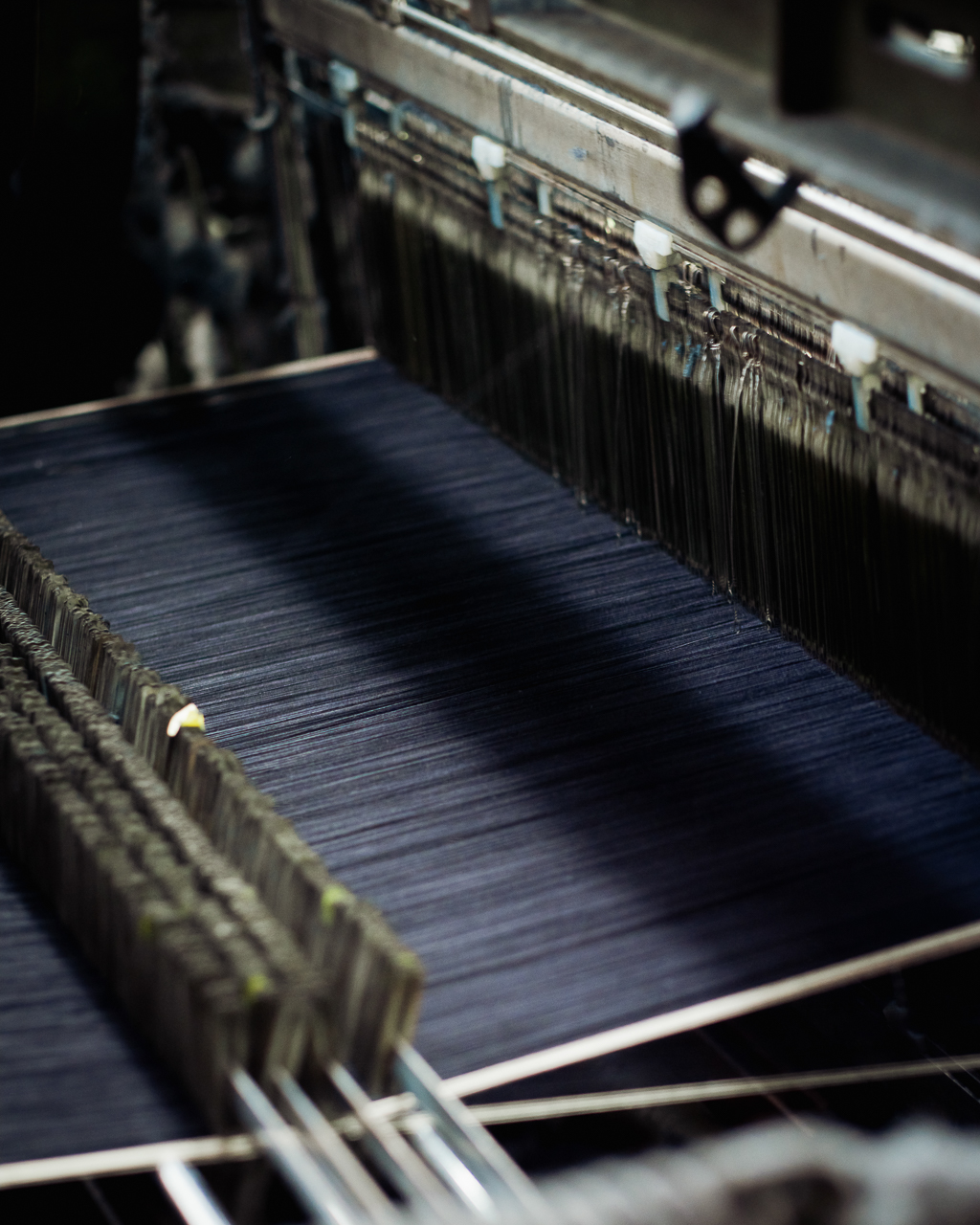

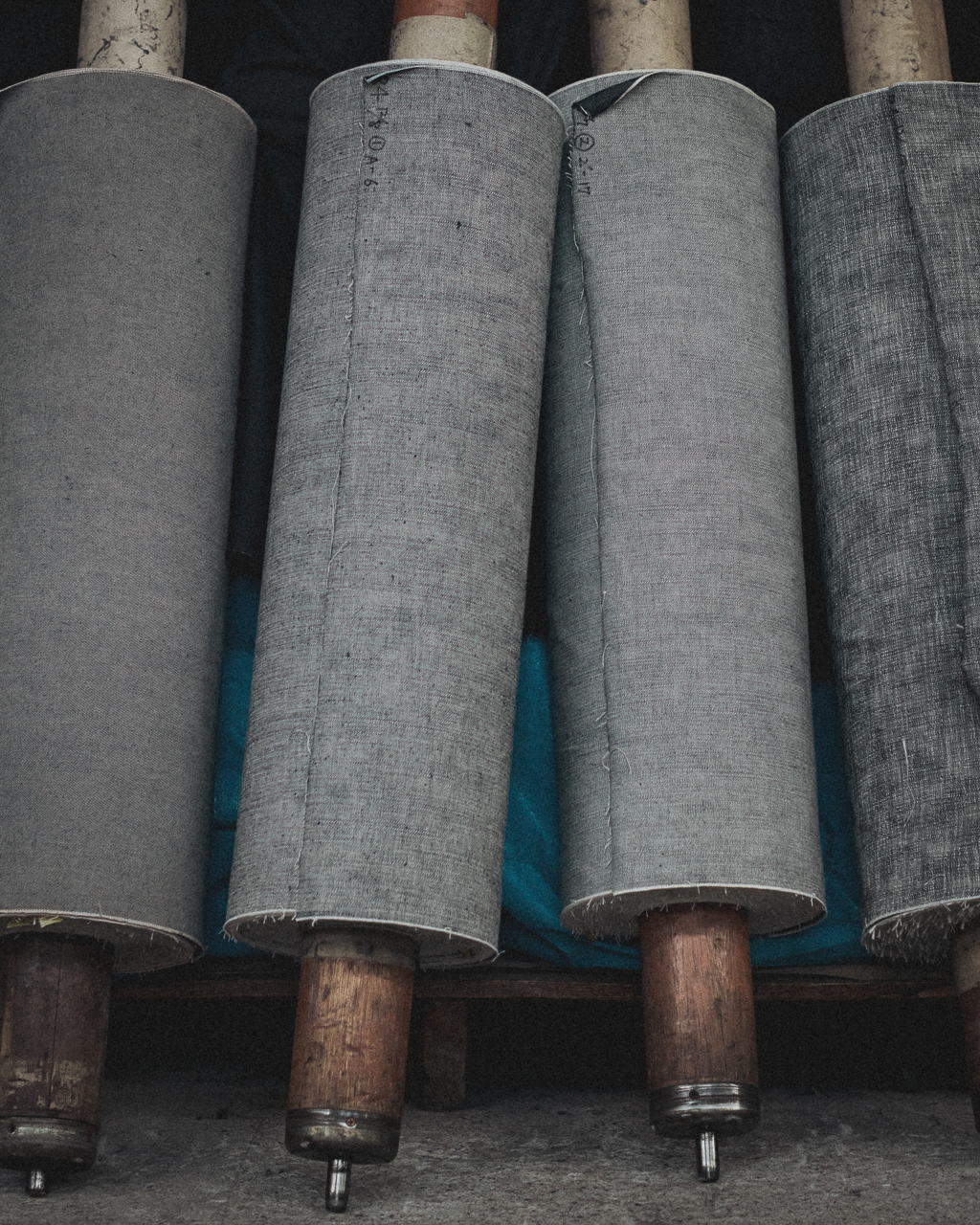

Selvedge vs Non-Selvedge Denim
The primary difference between selvedge denim and regular denim lies in its quality and relative rarity. This isn’t to say that selvedge denim is an automatic guarantee of quality, though. Selvedge denim can be, and has been, mass produced with the help of modern manufacturing.
Both the vintage shuttle looming and rope dyeing processes are, however, strictly small-batch, hands-on affairs. These processes require the utmost skill, care, and attention from makers who are meticulous in their craft. This meticulousness characterises every step of the denim making process. It ranges from the selection of the cotton, to the denim weaving, to the final finishings and flourishes. The result is a denim of exceptional character and quality. The mass market simply could not replicate this type of denim.
This low-yield, slow-pace method is what gives selvedge denim much of its allure. Selvedge denim is harder to produce and so speaks to a more considered way of making and wearing clothes. These old-school, tried-and-tested methods of production create a workhorse of a fabric that only gets better with age. Stiff and unyielding at first, raw selvedge denim softens and moulds to the wearer’s shape over time.
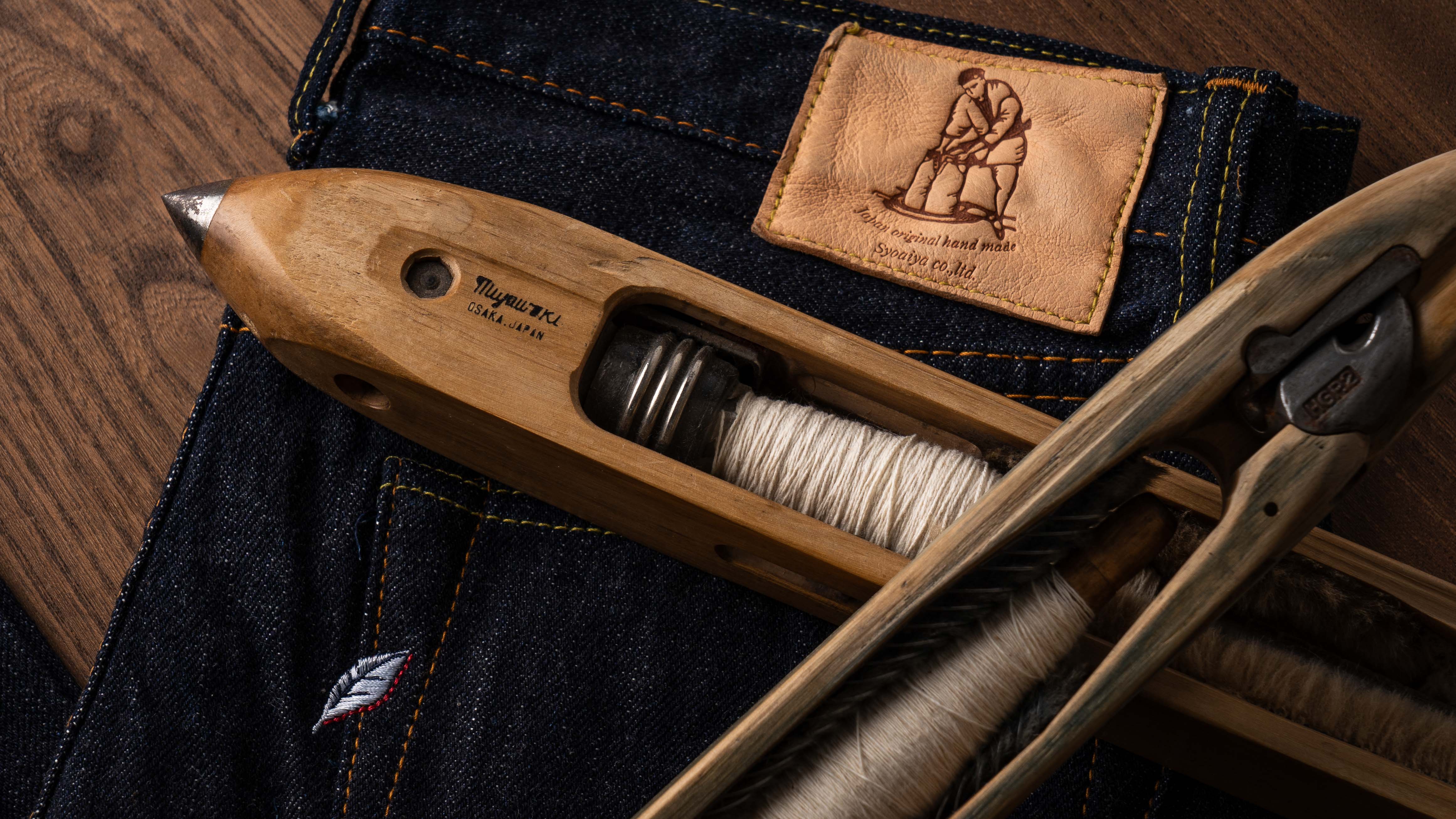

Our Selvedge Denim Brands
Here at Rivet & Hide, we source the vast majority of selvedge denim from Japan. This is simply for the fact that Japan is the very best at what they do.
Japan’s Okayama prefecture, particularly, earns fame for producing what many consider the Single Malt Scotch of selvedge denim. Shuttle loomed and expertly constructed to go the distance, Okayama denim adheres to age-old, small-scale production methods. What’s more, Okayama denim champions an attention to detail that borders on obsessive.
Okayama’s denim mills pursue an unprecedented level of quality and craftsmanship in today’s fast fashion market. A low-and-slow philosophy drives the brand’s makers in producing garments that go the distance and look better for it.
History, geography, and the intricacies of shuttle loom production aside, selvedge denim celebrates craft and mastery. This expertise goes into the production of the garments we wear day in, day out. Rivet & Hide is proud to be a part of that celebration. That’s why we’re happy to bring you our own, curated selection of the finest Japanese selvedge around.
Shop our selvedge denim collection.
